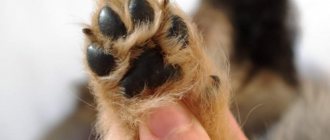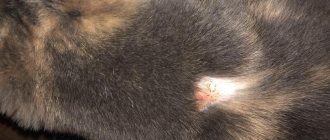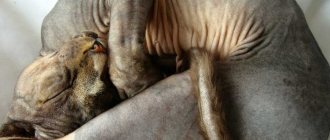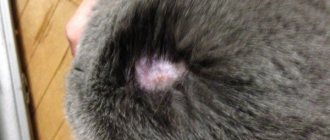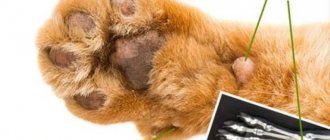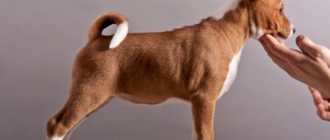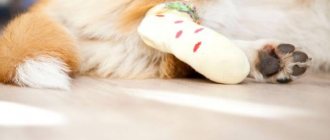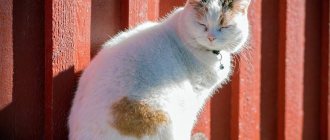Deceptively cute animal
A meerkat named Timon appeared at his owner's house completely unexpectedly. Having burst into his house, he burst into the heart of its owner, firmly settling there. And, although his character is not a gift, the owner still loves this fidget very much.
“Don’t look at how cute he looks like an angel!” - the young man with whom Timon lives says with a laugh. - “Don’t let that pretty face fool you!”
And indeed, looking at a meerkat, you might think that in front of you is a peaceful and calm animal. But it was not to be: in five minutes the opinion of any eyewitness will radically change, because Timon will show himself in his true light. The cute meerkat can only stand at attention until something interests him.
For example, the clothes in which the owner is lying on the sofa. And now the pet deftly puts its paws into its pockets, removing all the contents from there. And then the owner, in a panic, starts looking for something important like car keys, and it turns out that the meerkat took the find with him long ago and left it in a secluded corner where you wouldn’t immediately think to look.
Treatment and care
As a result of a comprehensive study, the doctor will give the animal a diagnosis, on which the further treatment plan will depend.
Depending on the disease that caused the paw failure, the following treatment methods for the cat are possible:
- Conservative.
- Operational.
- Physiotherapy.
Conservative method
Most diseases in the early stages can be cured with medication. If an infection is detected, the cat is prescribed antibiotics.
For dysplasia, painkillers and anti-inflammatory drugs are used. In some cases, drug treatment is effective against blood clots.
When a tick bites, antibiotics, diuretics and anticonvulsants are prescribed.
Often the animal is prescribed a diet. It is especially important to follow it if a cat is diagnosed with vitamin deficiency. In this case, vitamin-mineral complexes are also additionally prescribed.
It is important to control the weight of animals that suffer from hip dysplasia or arthritis. Obesity leads to deterioration of the cat's condition.
Surgery
Surgeries are performed in cases of closed and open spinal fractures. Surgical intervention is necessary to remove intervertebral hernias and neoplasms. It is also effective in case of blockage of blood vessels by a blood clot.
Rehabilitation and physiotherapy
Often, in order to restore mobility to paralyzed limbs, the animal must undergo a course of physical therapy. It should only be used as prescribed by a doctor. Otherwise, physical activity may worsen the animal's condition.
Often during rehabilitation the animal is prescribed a special massage. There are also a number of exercises that the owner should do with his pet:
- The paws can be developed using the “bicycle” exercise. Use your hands to carefully move your limbs back and forth.
- You should stroke and tickle the paw pads several times a day.
- Place a towel under the cat's belly. You need to take it by both ends and carefully lift the animal. The cat will try to walk forward by moving its hind legs.
Cereal mixture and overturned trash can
However, Timon is much more interested in things thrown into the trash bin. It’s much cooler there, because the variety of content is impressive. There are bright candy wrappers, scraps, and boxes. There is somewhere to roam. And it’s okay that the owner will then have to collect all this stuff: the pleasure of searching for “treasures” in a trash can cannot be replaced by anything!
Do you still have doubts that Timon is far from an angel? Then you will probably be interested to know that in addition to the trash can, the meerkat is happy to inspect the cabinets in which cereals are stored. It is not difficult to guess that soon there will be a mixture of cereals that even the hardworking Cinderella will not be able to sort out!
When it comes to food, Timon comes out on top. His owner also has other pets in his house: dogs and cats, who come running for a treat. But the nasty little meerkat jumps forward, trying to snatch the bag of food from the owner’s hands. When the food is finally divided among everyone, he hurries to his plate and quickly works with his paws, throwing the food onto the floor. And what? It’s even tastier, didn’t you know?
Lack of vitamins and microelements
The dog is limping on its front leg without visible damage
Due to a lack of calcium and excess fluoride in the pet’s blood, hyperparathyroidism develops, muscle weakness occurs, and the skeleton is deformed. This affects the motor functions of young cats, especially kittens. The pet feels discomfort, becomes lethargic, stops playing, and moves little because the kitten’s hind and/or front legs hurt.
If measures are not taken in time, this will lead to curvature of the paws, slow growth, neurological disorders, and deformation of the skeleton (pelvic bones, chest). As soon as the owners notice signs of lameness (sagging on the hind or front legs) during the period of intensive growth of the cat, they need to show it to the veterinarian.
Since it is impossible to determine the presence of a disease based on tests alone, an x-ray will be required. It will help identify old fractures and bone destruction sites. If you take action in time, there is a chance for a successful recovery.
For primary hyperparathyroidism, surgical intervention is used
When diagnosed with primary hyperparathyroidism, surgical intervention is performed. By removing damaged tissue, they minimize the production of parathyroid hormone. The animal is under constant supervision of specialists to monitor the level of calcium in the blood.
Treatment is based on adjusting the diet, adding vitamins to the animal’s diet, and if necessary, intravenous calcium injections and painkillers. In this case, the kitten is placed in a cage so that it moves less. After 4-5 weeks, the condition of the skeletal system returns to normal.
For your information! Siamese, Scottish, and British cats are predisposed to hyperparathyroidism.
Cat on hind legs
However, despite his fighting character, Timon is very friendly, so he has developed a warm relationship with a cat named Pumbaa, who lives in the house. The hairless sphinx prefers the company of the feline cat, because they have a common hobby: they love to watch what is happening on the street. Only, unlike all cats who do this while sitting or lying down, Pumbaa stands on his hind legs and freezes in place! Guess who taught him this trick? Of course, a meerkat, for which it is quite natural to be in this position.
The owner admits that he did not immediately notice this feature in Pumbaa. And when I saw it, I laughed for a long time and, of course, began making videos, showing my pet in the company of a meerkat. When the cat stands on its hind legs, raising its front legs, its blue eyes are wide open, expressing universal curiosity. At such moments, even the meerkat looks at him with interest, as if asking: “What did you see there, buddy?”, and then he himself looks out the window.
Causes of hind limb failure
Neurological disorders often lead to failure of a cat's hind legs. In most cases, only a doctor can determine the exact cause of paralysis.
Let's list a number of diseases that can lead to failure of a cat's hind limbs.
Injuries
Although cats are considered graceful creatures, they often fall from roofs or trees. An unsuccessful landing can lead to spinal injury or broken paws. Cats also sometimes get hit by cars. A dog bite or a directed blow can cause mechanical damage to the limbs and spine.
An injured animal may be in a state of shock, so immediately after the incident it will try to hide. When a limb is broken, the animal may feel severe pain when leaning on the limb. The paws may be unnaturally curved. The cat may have a dislocation, open or closed by a redissection.
Thromboembolism
This is a very dangerous disease that can lead to the death of the animal. This is when a cat's femoral artery is blocked by a blood clot (this could be a blood clot, a parasite, or air).
As a result, the limbs are deprived of oxygen supply. Tissue necrosis begins. The animal's condition is rapidly deteriorating.
In the first hours, the following symptoms can be observed:
- anxiety;
- meowing in pain;
- the animal does not allow you to touch the sore area (scratches, bites).
Gradually, the paws completely fail, they become cold. Apathy begins. The cat doesn't eat or drink. Death usually occurs within 2-3 days. You can save an animal if you consult a doctor in the first hours after an artery is blocked by a blood clot.
Dysplasia
This disease most often occurs in large cats (Maine Coons), but smaller breeds are also genetically predisposed to it: Siamese, Persian, Norwegian forest cat, British, Scottish.
We recommend the article: Why do wounds appear on a cat’s tail?
In most cases, this disease is congenital. It becomes most noticeable during the period of active growth of the kitten. With dysplasia, excessive formation of connective tissue occurs, the joint becomes too mobile. The animal experiences pain while moving.
Main symptoms:
- unsure gait;
- decreased activity;
- when resting, the cat stretches its paws rather than tucking them under itself;
- when walking, the animal experiences pain, and therefore tries not to strain its limbs too much;
- after the jump, the cat falls on its side and meows pitifully.
This disease is incurable. Maintenance therapy should be carried out - anti-inflammatory and painkillers should be given. Obesity should not be allowed in a sick animal, because it increases the load on sore joints.
Kidney failure
A dangerous disease that can appear in cats of all ages. It leads to disruption of the genitourinary system, as well as to a neurophysiological disorder. The functioning of the brain is disrupted.
Main symptoms:
- gradual decrease in the amount of urine;
- indigestion;
- unsteady gait, limb failure;
- increase in body temperature.
Avitaminosis
A poor diet, infection with parasites, and improper care lead to vitamin deficiency. An insufficient amount of vitamins and minerals enters the animal’s body, which causes a disruption in the development of bone and cartilage tissue.
If the animal does not receive enough sunlight, this can lead to rickets, which is often found in kittens. When it occurs, the development of bone tissue is disrupted, the limbs become bent and become fragile.
Lack of potassium leads to paresis of the limbs.
To avoid vitamin deficiency, the animal needs to be provided with a proper, complete diet. A cat that eats natural food should additionally receive vitamins.
Among ready-made food, preference should be given to premium and super-premium class. Economy class food does not contain enough minerals and vitamins.
Cardiomyopathy
Cardiomyopathy leads to an increase in the volume of the walls of the heart muscle, due to which the volume of the ventricles decreases. The heart pumps less blood. Oxygen starvation begins. The animal's limbs go numb.
Main symptoms:
- decreased activity;
- unsteady gait;
- refusal to eat;
- vomit.
Cardiomyopathy itself cannot lead to complete paralysis of the hind limbs. But because of it, thrombosis of the femoral artery can occur.
Stroke
There is a blockage of one of the blood vessels in the brain. A stroke can lead to paralysis of not only the limbs, but also all muscles. The animal may be completely immobilized.
Main symptoms:
- breathing and swallowing problems;
- severe anxiety;
- complete apathy;
- loss of sensation in the limbs;
- vomit.
Stroke is a very dangerous disease that can often lead to the death of an animal. A sick cat needs urgent medical attention. The sooner the correct diagnosis is made and measures are taken, the greater the chance of survival and recovery of the animal.
Spinal injury
The spine may be damaged due to injury or internal pathological processes.
The main sign of spinal injury is paralysis of not only the paws, but also the tail.
The animal begins to walk under itself. The sensitivity of the limbs is completely lost.
When a spinal fracture occurs, the following symptoms may occur:
- the cat's tail hung
- rapid breathing;
- loss of consciousness;
- strong heartbeat;
- decrease in body temperature.
Intervertebral hernia
A hernia forms on an intervertebral disc. An experienced doctor can detect it by palpation. The nerves are compressed, causing the animal to be unable to move its limbs normally.
We recommend the article: Lump on a cat’s back: what is it and what to do about it?
Most often, a hernia occurs in older animals. In most cases, it does not lead to complete failure of the limbs, but only to a disturbance in gait. The situation can only be corrected by surgical intervention.
Tick paralysis
The bite of ixodid ticks leads to the entry of toxic substances into the body. The disease develops very quickly.
At first, the cat begins to behave very excitedly. Afterwards, activity decreases and limbs fail. The cat stops eating and drinking and reacts poorly to stimuli. Body temperature rises greatly. Severe trembling and vomiting are possible. The animal loses consciousness and convulsions begin.
The cat can be saved only if treatment is started in time. In half of the cases when bitten by an infected tick, the animal dies.
Spinal cord inflammation
It can occur for various reasons: infection by parasites, poisoning, infection and others.
Main symptoms:
- increased body temperature;
- indigestion;
- urinary incontinence.
With timely consultation with a doctor, complete restoration of limb function is possible.
Hyperparathyroidism
Most often, hyperparathyroidism is caused by improper and unbalanced feeding of the animal. The production of hormones is disrupted. Calcium from the animal's bones enters the blood. The bones themselves become thinner and more fragile. The animal's gait is disturbed, the cat feels severe pain. The spine also becomes more fragile. Neurological functions are impaired, causing the cat's hind legs to fail.
Nerve damage during injection
Sometimes when administering an intramuscular injection, the owner or doctor may hit the sciatic nerve with a needle. This can lead to temporary impairment of the animal's paw. Often the limb returns to normal within a few days.
Read also (updated 11/21/2020)
Below we have prepared for you links to publications that have recently become particularly popular among our readers:
- how to feed a newborn kitten without a cat;
- why does a cat always want to eat?
- Malamute dog;
- bird robin;
- what a poisonous viper looks like and where it lives.
Other causes that may cause lameness
In addition to illnesses, other factors can affect a cat's gait.
- Standard routine vaccination. After the injection, the cat’s paw hurts, does not step on it at all, or occasionally leans on it. The person usually limps on the limb into which the drug was injected. As a rule, this is not a dangerous phenomenon; the disease tends to go away quickly within a few days. If it is protracted and lasts more than 2 weeks, it is worth showing the cat to a veterinarian. Usually ointment and massage are prescribed. With the help of simple procedures carried out at home, your pet will quickly recover.
- Sterilization of the animal. Although it is considered an ordinary operation, it is still a surgical intervention. The cat may limp for some time, but with proper care and the absence of infection, it will quickly recover.
- When the cat experiences stomach pain due to perforation or foreign bodies, the integrity of the tissues, including nerve endings, is disrupted. In this case, lameness is only one of the symptoms of a serious condition. Usually the cat is bothered by vomiting, bleeding from the anus, and general weakness. If all of the above signs are present, the pet must be urgently taken to the clinic. The diagnosis can only be made by a specialist after a detailed examination and review of test results. Surgery is often required.
Accidental cuts also cause lameness
- Cut wounds, bites. The cause of lameness may be hidden in an ordinary wound that the owners did not notice during examination. The cat could have cut itself by jumping on the glass, or been bitten by a dog. It is necessary to examine the sore paw again, finding damage, treat it with any antiseptic, and apply a bandage. The wounds heal quickly, and lameness goes away if they are not associated with infection.
- With infectious inflammation of the limbs, in addition to lameness, the cat’s temperature rises, general tone decreases, and appetite disappears. When palpating the inflamed area, purulent discharge can be detected. In this case, the cat reacts sharply to pain, meows, escapes from the hands and hides from the owners. The wound must be treated and bandaged. To prevent complications, you should show it to a veterinarian.
What to do if your cat has a sore paw and is limping
If it is not a tiny wound, not a slight bruise, but long-term lameness, the animal must be shown to a specialist. Elementary inattention, negligent attitude towards the health of a pet and attempts to treat lameness on your own often lead to complications, even disability, since it is impossible to make an accurate diagnosis without a medical education. In most cases, X-rays and tests are required. Only based on the results of a complete examination, an injured area or disease requiring medical treatment is identified.
Important! Many dangerous diseases that cause lameness can only be treated surgically. In any case, only a doctor can identify the disease and prescribe treatment.
Prevention of arthritis, arthrosis, vitamin deficiency
Prevention of lameness
To prevent lameness due to insufficiency of vitamins and microelements, the development of arthritis, and arthrosis, the cat’s diet must be balanced. If you use dry food, then only high-quality industrial food. Before purchasing, you should carefully read the ingredients. It is necessary to limit the consumption of canned food, fatty foods, flour products, and also add more boiled vegetables.
Only a veterinarian can prescribe vitamins. Many four-legged felines are allergic to them.
Whatever the cause of lameness, it causes discomfort and pain to the patient. Trying to treat it yourself means wasting time. What if this is a serious disease that requires urgent surgical intervention? It is not at all difficult to show your pet to a specialist, thereby preserving his health, and in some cases, his life.
